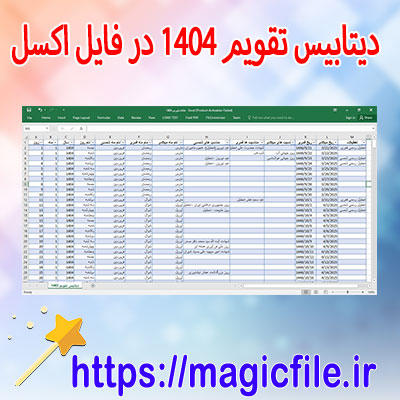مقدمهای بر Screen Recorder
برنامههای ضبط صفحه، ابزارهای بسیار مفیدی هستند که به کاربر اجازه میدهند تا فعالیتهای روی صفحه نمایش خود را ضبط کنند. این برنامهها معمولاً در آموزشهای آنلاین، وبینارها، و حتی برای ثبت بازیهای ویدئویی مورد استفاده قرار میگیرند. در اینجا به بررسی سورس و کد مربوط به یک Screen Recorder میپردازیم.
ساختار کلی کد
سورس کد یک Screen Recorder معمولاً شامل چندین بخش کلیدی است:
- کتابخانههای مورد نیاز: برای ضبط صفحه، نیاز به استفاده از کتابخانههای خاص دارید. به عنوان مثال، در زبان پایتون میتوانید از `pyautogui` و `opencv` استفاده کنید.
- تنظیمات ضبط: این بخش شامل تنظیمات مختلف نظیر رزولوشن، فریم ریت و فرمت فایل خروجی میباشد.
- شروع و متوقف کردن ضبط: تابعی برای شروع ضبط و تابعی دیگر برای متوقف کردن آن. این توابع معمولاً با استفاده از رویدادهای کلید (Key Events) فعال میشوند.
کد نمونه
در زیر یک کد نمونه ساده برای ضبط صفحه با استفاده از پایتون آورده شده است:
```python
import cv2
import numpy as np
import pyautogui
# تنظیمات
screen_size = (1920, 1080)
fourcc = cv
- VideoWriter_fourcc(*"XVID")
- VideoWriter("output.avi", fourcc, 20.0, screen_size)
while True:
# گرفتن تصویر از صفحه
img = pyautogui.screenshot()
frame = np.array(img)
# تبدیل رنگ BGR
frame = cv
- cvtColor(frame, cv2.COLOR_BGR2RGB)
# نوشتن فریم در ویدیو
out.write(frame)
# نمایش تصویر
cv
- imshow("Screen Recorder", frame)
- waitKey(1) == 27: # کلید ESC
out.release()
cv
- destroyAllWindows()
توضیحات کد
در این کد:
- از `pyautogui` برای گرفتن عکس از صفحه استفاده میشود.
- `cv
- VideoWriter` برای ذخیره ویدیو در فرمت AVI به کار رفته است.
نکات پایانی
ضبط صفحه میتواند به سادگی انجام شود، اما تنظیمات و بهینهسازیهای بیشتری وجود دارد که میتوانید اضافه کنید. به عنوان مثال، میتوانید قابلیت ضبط صدا را نیز به برنامه اضافه کنید. در نهایت، درک و تسلط بر کدهای مربوط به Screen Recorder به شما این امکان را میدهد که ابزارهای کارآمدتری برای ضبط ویدیوهای آموزشی و سایر محتواها ایجاد کنید.
SOURCING AND CREATING A SCREEN RECORDER CODE: AN IN-DEPTH GUIDE
When diving into the world of screen recording, understanding the source code behind these tools becomes crucial, especially if you aim to customize, optimize, or even build your own. A screen recorder essentially captures what’s happening on your display and saves it into a video file. But the process involves multiple components—graphics capturing, encoding, storage, and sometimes even live streaming.
FOUNDATION OF SCREEN RECORDING
At its core, a screen recorder relies on capturing frames from your display. This uses APIs or libraries like DirectX, OpenGL, or platform-specific tools such as Windows GDI or macOS Quartz. For example, in Windows, one might use the WinAPI functions like BitBlt or DIB sections to grab screen data. On Linux, tools like X11 or Wayland provide similar capabilities.
CAPTURING THE SCREEN
In code, this process involves setting up a loop that continuously captures frames at a specified rate—say 30 frames per second. Each frame is stored temporarily in-memory, often as bitmaps or raw pixel buffers. To optimize, developers use techniques like double buffering or hardware acceleration.
ENCODING AND COMPRESSION
Raw captures are massive, so encoding is vital. Common codecs include H.264, VP8, or VP9, which compress the data, reducing file size while maintaining quality. Libraries like ffmpeg, x264, or Intel Media SDK are heavily used here. In code, you initialize an encoder, feed raw frames into it, and extract compressed packets for storage.
STORAGE AND OUTPUT
Once frames are encoded, the next step involves writing data into a video container format, such as MP4, AVI, or MKV. The process involves synchronizing frame timestamps and ensuring seamless playback. Developers handle this through container-specific APIs or libraries.
LIVE STREAMING AND ADDITIONAL FEATURES
Some screen recorders also support live streaming, which adds network handling, buffering, and real-time encoding. Others include features like audio capture, annotations, or screenshot capabilities. These functionalities expand the source code’s complexity significantly.
BUILDING YOUR OWN SCREEN RECORDER
To develop a custom solution, you’d start by choosing your platform. For Windows, you might use C++ with WinAPI; for cross-platform, languages like Python with libraries such as PyAutoGUI, OpenCV, or ffmpeg bindings are popular. You’d set up screen capturing, encode frames, and write them into a file. Adding UI components—buttons, progress bars—requires additional coding.
CONCLUSION
In essence, the source code for a screen recorder is a sophisticated combination of screen capturing methods, encoding algorithms, and file management. It demands knowledge of graphics APIs, multimedia codecs, and real-time data handling. Whether you’re dissecting open-source projects or building from scratch, understanding each component helps you create more efficient and feature-rich tools.
If you want detailed code snippets or specific library recommendations, just ask!





